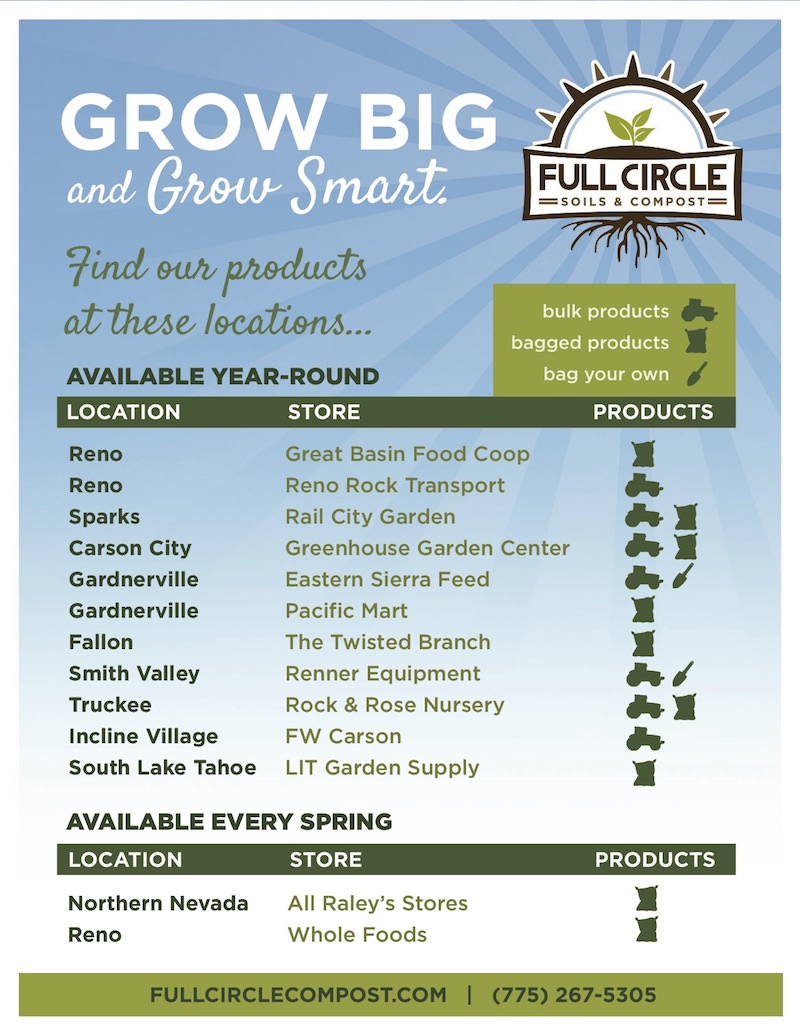Hot August mites!
Watch out for mites in the hot August heat. We know some tricks to beat them.
Did you know that spider mites LOVE heat waves? When it’s hot and dry, those nasty mites come out to steal all the nutrients from your plants. Make sure to use diatomaceous earth (DE) for those mites! Spider mites are hard to spot, but if you see yellow, sickly leaves or little webs, you’ll know it’s time to whip out that DE. In this awesome video, Farmer Craig shows how easy it is to control pests on your plants and veggies organically. Dusting your plants with diatomaceous earth literally will cut the bugs to piece.
Tomato pre-harvest rules of (green) thumb

These big plants are starting to push out tomatoes to go into our bellies!
Once your garden starts smelling like tomatoes, it’s hard to resist picking fruit to sample again and again. We could get into scientific averages that suggest when and how frequently to harvest every species of tomato, based on size, color, shape, smell, micro-climate, proximity to other fruit, etc. BUT the rule of-green-thumb around here is: If it looks like it’s time to pick your tomatoes, then it probably is! If you find that you picked a batch a little early, leave them sitting out on the counter for a few days and they’ll finish ripening. If you find you picked them too late and they were mushy, pick a little earlier next time (duh).
Before you go gathering, drying, and jarring, read Farmer Craig’s following picking tips for harvesting your tomatoes at the right time and with the proper technique:
- If you have a couple tomatoes that aren’t quite ready for picking, but their stems are about to snap from the weight, prop them up with a stake.
- Are all those leaves suffocating the fruit? Pruning your tomato plants can improve air flow to the plant and also help accelerate growth while keeping your plants tidy.
- When there’s lots of unripe fruit, get to topping! About four weeks before the first frost, snip the top of growing stems. This will cause the nutrients to head back to the fruit, which plumps them up, helps them ripen faster, and makes them extra tasty!
- When a one-night freeze is coming, don’t throw up your gardening gloves and give up just yet. Cover those baby tomatoes with a blanket for the evening. This should keep them insulated for the night.
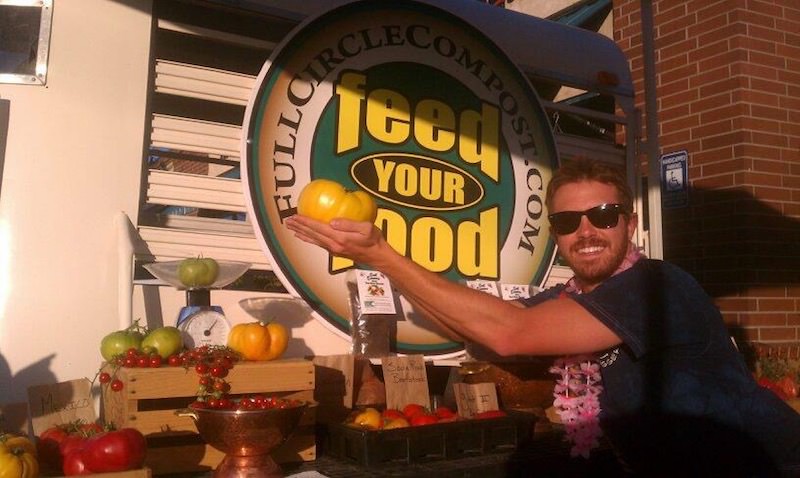
If you grow a tomato this big, you may need a tree to hold it up.
It’s harvest time!
When your tomato is plump and has one even color, it’s ready to be picked. However, since tomatoes need heat to ripen, not light, our August temperatures here in Northern Nevada can ripen your tomatoes quickly. If we find ourselves in a heat wave, it’s best to pick tomatoes when they’re orange (most varieties), since they will continue ripening off the vine. When a tomato is ripe and ready to be picked, grab the tomato in one hand and twist until it snaps from the vine. Clippers work fine, too, but the key is to cut the stem as close to the fruit as possible.
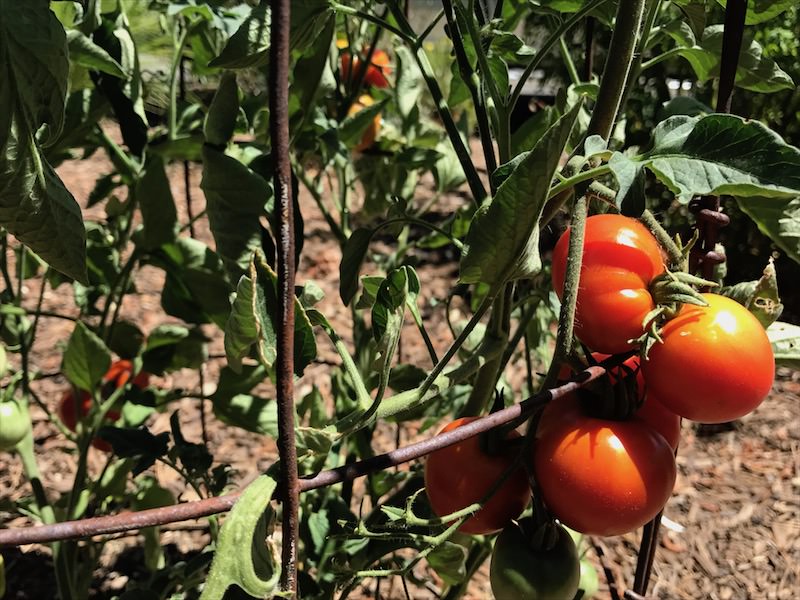
Stupice tomatoes ripening on the vine in Reno in summer 2017
Help! Too many tomatoes!
When you’re swimming in ripe tomatoes and you couldn’t possibly eat them all, don’t worry; you won’t have to waste a single one!
- Pick ’em. Pick your plants clean and share them with neighbors, co-workers, friends, and family. You’ll get a whole lot of hugs by sharing garden-fresh treats! At the end of the harvest — and before the first freeze — go ahead and pick the green ones, too; they’re great for frying and pickling.
- Jar ’em. Preserve your ripe tomatoes so you can have that amazing flavor all year round. Either skin tomatoes and jar them whole, or make a sauce. TIP: Unless you like skins and seeds in your canned tomatoes, don’t bother canning cherry or grape varieties — it can be a mess.
- Dry ’em. Nothing beats a handful of dried tomatoes. We suggest oven drying them. This gives them a more tender texture than sundried ’maters.
- Pickle ’em. Pickled tomatoes? Heck yes. Check out our pickled green tomatoes recipe below.
Garden fresh recipes for the whole family
If you’ve got family members who won’t touch tomatoes with a 10-foot pole, they haven’t tried these recipes below.
Peach & Tomato Summer Salad
This easy summer salad, compliments of Blend Catering in Reno, is one of our summer favorites! Give it a try, and don’t worry about eating it immediately. It tastes even better if you let it marinate.
4 to 5 heirloom tomatoes
2 to 3 peaches or nectarines
Fresh basil
Fresh tarragon
¼ cup olive oil
3 tablespoons white balsamic vinegar
Salt and pepper, to taste
Cut peaches & tomatoes into bite-sized chunks. Slice basil and tarragon and toss with tomatoes and peaches. Salt and pepper to taste. Combine olive oil and vinegar, adjusting amounts as desired, and toss into salad.
Pickled Green Tomatoes
Use pickled green tomatoes on steak sandwiches, salads, or in chile verde. Your family will be sure to love them — even those tomato-haters!
2 pounds sliced green tomatoes
⅓ cup salt
1¾ cup apple cider vinegar
⅔ cup brown sugar
3 tablespoons mustard seeds
¼ teaspoons celery seeds
1½ teaspoons turmeric
2 large yellow onions, sliced
2 large green peppers, seeded and diced
2 hot red or green chiles
Place tomatoes on rack over baking sheet. Shake a little salt all over them and stick them in fridge for at least 10 hours or overnight. Use colander to drain them for 30 minutes.
Combine vinegar, sugar, mustard seeds, celery seeds, and turmeric in saucepan and bring to boil. Don’t forget to stir! Add onions and let mixture simmer 5 minutes. Stir in tomatoes, peppers, and chiles, then bring to boil. Reduce heat to low and simmer 5 minutes.
Pour and seal into sterilized jars. Make sure jars are hot so they don’t crack! Keep jars in refrigerator at least 2 weeks before serving.
Life of the tomato: Common diseases and conditions and how to correct them
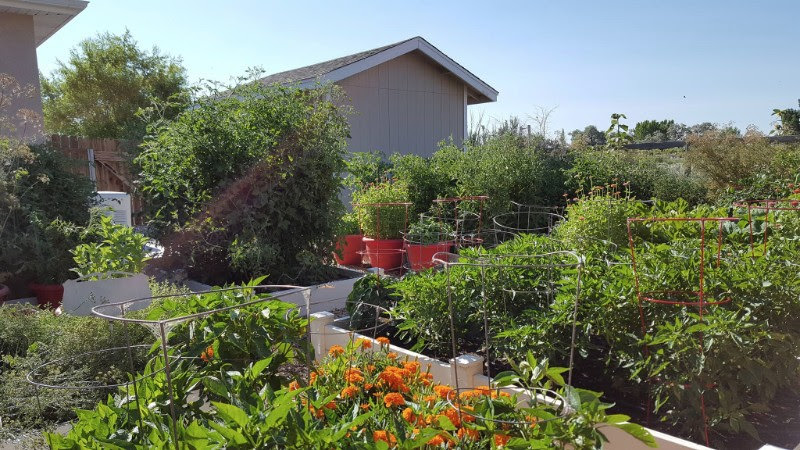
Full Circle customer Gail sent in this picture showing her huge garden with big tomato plants. She used Full Circle’s BOOST Soil Amendment.
Why are my tomatoes cracking?
Tomatoes crack or split because their skins can’t grow at the same rapid pace as their insides. Tomatoes will bulge and grow after a big soak if they haven’t had consistent watering prior. A heavy rain that soaks your plants more than you usually do can cause this. Keep your watering as consistent as you can and you’ll lessen this a bit. Heirloom tomatoes just have a knack for cracking. Don’t toss out those cracked tomatoes. Chop off the cracked portion and get to eating. Remember, this is not a disease at all. *Using Full Circle’s PROTECT will keep the soil evenly moist and minimize cracking.
Why do my tomatoes look like they have The Black Plague?
Fear not, this also is NOT a disease. It’s more of a nutrient deficiency that you can correct if it’s still early enough in the season (remember this for next year). This condition is called blossom end rot, and it’s quite common in container planting. Blossom end rot also can happen if you’re watering your plants inconsistently. Keep their water patterns consistent.
The black part of the fruit is not a disease and will not spread to the other part of the fruit. You can let them continue growing and cut off the end when it comes time to eat them. OR you can pluck every affected fruit from the plant and let new fruits bloom. Your choice.
What are these tiny, dark bumps with a white border?
Now THAT is a disease — bacterial speck, to be specific. Use copper fungicide as soon as you see these symptoms. Copper sprays also are helpful with anthracnose, a common fungus that causes your precious tomato fruits to rot. Keep an eye on your fruit daily so you can be sure to catch signs of disease as soon as possible. A quick Google search of what you’re experiencing likely will be all you need to diagnose any issues.
For more details, visit Fullcirclecompost.com. Our products can be found at the following retail locations. It still is time to BOOST and PROTECT your garden and landscape for the rest of summer and in preparation for winter. During the summer harvest and after, add a ¼-inch layer of BOOST to add nutrition all summer, fall, and winter long. Cover that BOOST with 1 inch of PROTECT mulch to act as a blanket to keep your soil and plants warm and cozy as we move into fall and winter.
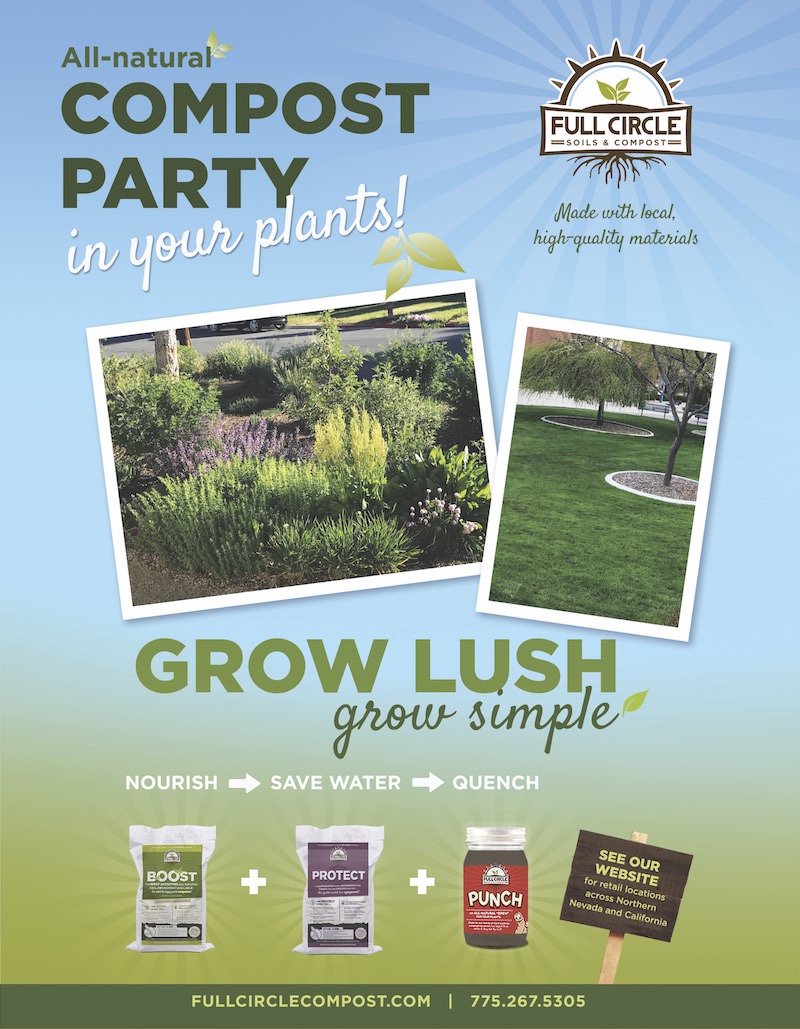
BOOST + PROTECT + PUNCH program for ultimate Nevada soil nutrition
Full Circle products can be found at these fine retailers
Follow Full Circle Compost:
NOTE: This is a sponsored post.
Cody Witt manages and operates Full Circle Soils & Compost along with his dad, Farmer Craig. Full Circle’s all-natural products help gardeners and growers repair and sustain healthy, nutrient-rich soils. He also creates “Full Circle” environmental networks in which partners help to establish a fully sustainable community of suppliers and producers through organic materials recycling; soil-fertility program implementation; sustainable, beyond-organic food and medicine production; and education. Cody Witt is a fifth-generation Nevada farmer who completed his MBA and multiple undergraduate degrees from the University of Nevada, Reno.

